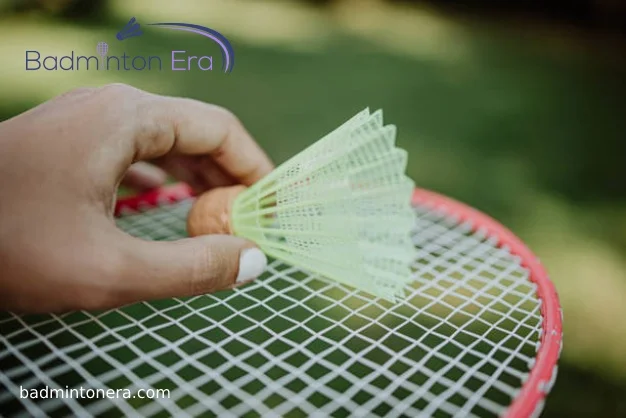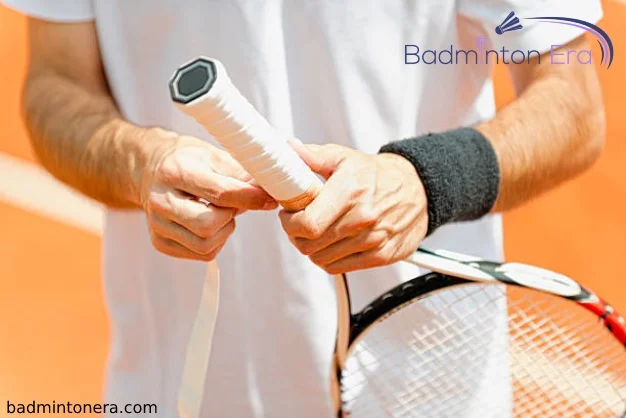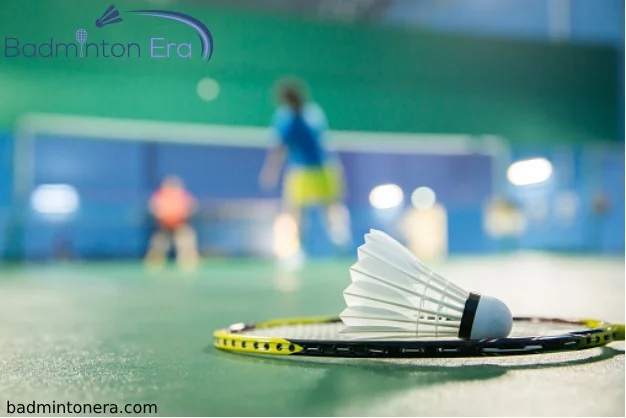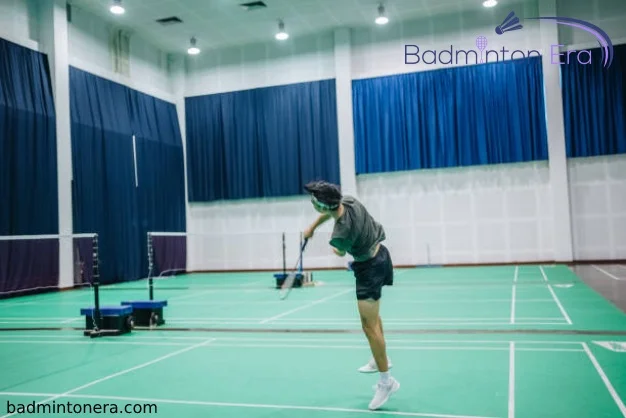Types of Badminton Drive Shots You should know
Introduction to drive shots in badminton:
A simple flat smash a player hits over the net is a drive shot. It is a simple, swift, and counter-attacking shot. Playing the hit properly will force your opponent to hit an upward return, providing you with an opening for a counter-attack. Players often use it in doubles matches because they want to keep the shuttle low. There are several badminton drive shots; you should know to perform well.
You can use both the forehand and the backhand drive shots to perform the Drive Shot. To execute, hold your racket with the head facing forward and lock your wrist as the shuttle touches your racket. To deliver a flat, quick drive to get the shuttle behind your opponent and force them to make a shaky turn is objective.
1. Forehand Drive Shot:

In doubles matches of badminton, a forehand drive is often used to stop your opponent from taking the initiative of the rally and take it for yourself. It is rarely used in singles since it is a risky technique that, if done carelessly, can backfire.
When to use forehand badminton drive shots:
- You can use this type of badminton drive shots when you have a strike in the middle of the court. This shot must not be high enough for you to smash it or low enough to hit it close to the floor.
- In singles, the forehand drive—or any badminton drive shot, for that matter—is not an often played shot. Drive shots and the speed that goes with them are high risks in singles since you have to cover the entire court by yourself. They are, therefore, only used under specific conditions, such as when a player estimates a significant advantage and wants to pressure the opposition.
- The area to cover is smaller in doubles because there are two players on each court. In this situation, winning points depends on attacking and winning a point decisively rather than getting your opponent out of the way of the shuttle.
So, having the rally’s initiative is crucial. As a result, players go to great lengths to maintain the initiative. Forehand drives are used, as a result, because they enable you to return a shot to the center of the court where neither you nor your opponents have the initiative.
Flat Forehand Drive:
It is a badminton drive shot in which both players engage in flat shuttle exchanges with a forehand grip when in the neutral position.
- The grip utilized in this shot will be different from the standard forehand grip.
- The panhandle grip is used to achieve the angle of the racket, while we use the simple forehand to get the gripping technique.
- In terms of positioning, it is among the easy drives. When playing flat drives in badminton, a fundamental defensive stance is necessary.
- In a flat drive, you can produce power by arm motion.
Defensive Forehand drive:
When players defend a smash, they play a drive known as a counterattack in some regions.
- Knowing the proper grip is the first step in making this shot. Forehand drives are made with a simple grip, it helps your fingers provide the most power.
- Position yourself to make the shot. When playing drive shots, the shuttle is typically close to your body since playing drive when Smash approaches the sideline is not a wise move. The reason is; when the shuttle is far from the body, it is difficult to produce adequate power in your shots. When it comes to the situation, your posture is the only thing you need to pay attention to. Put yourself in a defensive position and keep your racket below your chest (so you can block steep smashes).
- Make this shot using a wrist and arm motion. There are two approaches.
Full arm movement:
As the name implies, you use complete arm movement with this approach to give your driving shot more power.
Hand motion:
This approach is more deceiving since it involves less racket movement and also requires more wrist strength. You might be surprised to learn that your wrist movement affects the quality of your shot.
Net Forehand Drive shot:
It describes the shot played from the net area to the opponent’s backcourt. The primary goal is to throw the opponent off balance.
1- Learn the proper grip as the first step:
The grip will be the same as that used in the forehand defense drive, but some players use the panhandle grip in the belief that it will add more force.
However, this is untrue, as the Panhandle grip restricts both the region on which you may exert force and the mobility of the racket.
2- Positioning yourself:
Although the shuttle will be near your body during defensive drives, not net drives.
Don’t play net drive
if you can only reach the shuttle when it is slightly above or below the net height
Extend your racket arm completely, during the net drive to make contact with the shuttle as soon as possible.
3- How to move your racket:
Before you play a drive shot, make sure you’re quick enough to respond to your opponent’s return if he manages to do so because drive shots travel faster on the court.
2. Backhand Drive Shot:
The backhand drive is a flat shot executed from midcourt to midcourt to dislodge the opponent.
Drives are offensive shots that can open up scoring opportunities even if they don’t directly result in points for you.
For the backhand drive, use the thumb grip. By placing the thumb towards the back of the handle, you may control your motion and increase strength and velocity. As always, maintain a loose grip so the handle can rest on your fingers. Let the thumb approach the handle at a short angle.
- To begin a backhand drive, take a split step that is to occur just as your opponent has struck the shuttle.
- Then, as you jump forward, if possible, to meet the shuttle, put all of your weight on your leading leg.
- Use a loose thumb grip to extend your racket arm while moving your elbow forward and upward.
- After the backswing, place your palm down and face the racket strings upward.
- During the backswing, pronate your posture by turning your forearm inward. followed by a forward swing that extends outward before ending steps to make.
- Use a tapping or rebound action to hit the shuttle in front of your leading foot at its highest point.
If you want to avoid your opponents taking advantage of your weak side, work on making your backhand as strong as your forehand.
3. Flat Drive Shot:
In badminton, a flat drive shot is a quick, strong shot that crosses the net horizontally. It is typically used as a defensive shot to stop an opponent’s smash or hard-hit stroke. The player must hit the shuttlecock with a horizontal racket face to create a flat trajectory that stays low over the net during the flat drive shot. Provided that it is played with a quick and compact swing, this stroke requires strong footwork, timing, and wrist motion. Any badminton player must refine the flat drive shot because it is a powerful means to take back the rally and apply pressure on the opposition.
4. Slow Drive Shot:
A slow drive shot in badminton is a kind of stroke that has a low trajectory and little force. This stroke is frequently used to keep the shuttlecock in play because it enables the player to keep control of the shuttlecock and prevents an aggressive shot from their opponent. To propel the shuttlecock over the net with a slow, sweeping motion, slow drive shots are frequently made from the back of the court. When playing against an opponent who has a position at the net, this shot can be successful because it makes them move swiftly to return the shuttlecock.

5. Cross-Court Drive Shot:
The cross-court drive shot is a specific move in the fast-paced racquet sport of squash, in which players play on a four-walled court. The opponent’s back corner is the target of the shots, which include striking the ball diagonally across the court from one side to the other. A low, strong hit is generally helpful for executing the cross-court drive shot to keep the ball near the side wall and make it challenging for the opposition to recover. To play it, one needs strong footwork, timing, and accuracy. By putting the opponent under pressure and freeing up space for a follow-up shot, use this shot to gain an advantage in the game.

6. Defensive Drive Shot:
Players who want to do well in badminton must possess the ability to defend driving strokes. These shots are beneficial :
when a player is under pressure
when their opponent hits a strong and quick shot
It becomes challenging for the player to return the shuttlecock with a typical defensive shot
in such conditions.
We can play defensive drive strokes with a forehand or backhand grip and a slightly flat racket face. To hinder the opponent from playing an aggressive stroke, you must hit the shuttlecock low over the net and as far back into the court as feasible.








